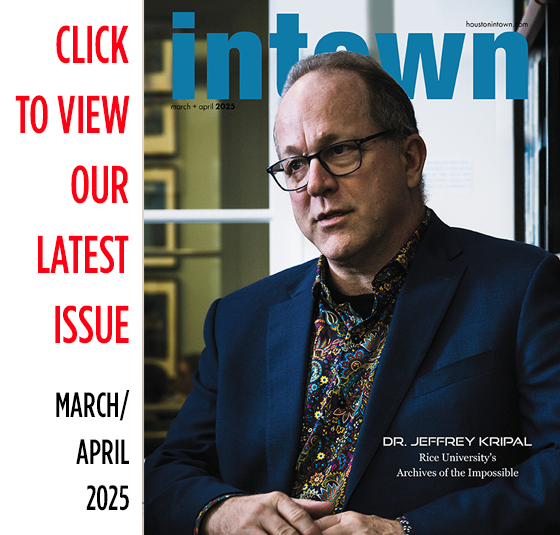
How did you end up becoming the president of arguably the world’s best cancer treatment center- MD Anderson? Did you apply or were you recruited?
The University of Texas System Board of Regents conducted an extensive search where there were over 100 candidates in the international field. This was an extremely important position in cancer and so it attracted a lot of interest. After whittling to three finalists and then a sole finalist where I was selected, I was granted the privilege and honor of serving this institution. However, I think the real reason I was picked was because they wanted to recruit my wife, Lynda (Chin), an accomplished scientist who has recently been elected to the Institute of Medicine of the National Academies.
For nine of the past 11 years MD Anderson has ranked number one in cancer care according to U.S News and World Report. Why is this such a great facility?
MD Anderson’s mission is to eliminate cancer and all 19,000 of our employees push to accomplish that goal. Daily pursuit of our mission has been – and is- fundamental. It really has taken the best evidence in how to treat cancer and convert that evidence into a standard of care that really improves the potential of a patient to survive their encounter with cancer. First of all, this is science-driven cancer care and we contribute significantly to developing standards of care that are practiced all over the world.
Secondly, the number of patients that we see are significant. Last year we cared for more than 100,000 patients. We have performed over 10 million diagnostic procedures and placed 11,000 patients on life saving clinical trials. In medicine, practice makes perfect. In addition, we have a unique approach for patient care which is called the multi-disciplinary care of the patient. Essentially what that means is when a breast cancer patient comes into the clinic, that patient has the collective wisdom of specialists that only focus on breast cancer. We come at it from every angle of oncology, medicine, surgery, radiation, nutrition, and other disciplines. It’s that collective wisdom and experience that’s brought to bear on the management of that individual’s cancer.
Early on in your new position you said “we’re going to attack and cure five cancers”? Have you determined which five and how is that progressing?
A couple of months after coming here, I posed the question: if you wanted to ultimately cure a cancer what would it take and what would be your approach without regard for the resources or the organizational restraints to achieve a particular goal for a particular cancer. Many cancers were analyzed and investigators came together with a plan that was submitted to an internal and external advisory board that was chaired by the president of the American Association for Cancer Research.Then that group asks whether or not those particular cancers were at the right period in their evolution to be able to say that we should be able to make a decisive assault on those cancers. The goal in this decade is to reduce the mortalities more dramatically than we have in those cancers and ultimately set the stage for the control. The cancers we selected were prostate, lung, two forms of leukemia (acute myelogenous and chronic lymphocytic), melanoma, triple negative breast cancer and a particularly lethal form of ovarian cancer. in the coming months we will embark on the implementation of these plans.
More recently when you came to MD Anderson the Institute for Applied Cancer Science (IACS) was formed? What does it do and what is MD Anderson’s involvement?
One of ten platforms of the moon shots is the IACS. In academia it’s mostly about discovery and the ability to systematically translate a discovery into a drug, a diagnostic or a device that can improve human health. There has been this ecosystem that exists which is academia, biotech,and pharma which is a relay race that brings discoveries all the way to a commercialization end point.These platforms allow us to insure that these discoveries are driven to these various end points. The problem with the current ecosystem and in big pharma is that drugs have a 95% failure rate. Over half of those failures occur in phase three at an enormous cost and that’s one of the reasons the costs of drugs is so high. Why do we fail? We believe that part of the reason is we are not doing enough due diligence and biotech is not in a position to do enough deep validation of the concepts of the target and the drugs sufficiently to increase the probability of success once you get into the clinic. So we decided on a new organizational construct that allows us to bring the ball down the field a little bit further. We’re not going to replace biotech or pharma, but just to be able to better validate concepts and develop really good drugs against those targets. This new construct will bring the academic rigor, creativity and depth of analysis that’s famous for and has the defining characteristics of academics and at the same time it has also the industry like execution and discipline to be able to drive discoveries to a particular end point. Having reached that end point medicines can be licensed to pharma or biotech or used to form a new biotech company.
How closely related is (IACS) to the state organization Cancer Prevention and Research Institute of Texas (CPRIT)?
It’s very much within the goal of that effort which is to reduce the deaths and burden of cancer through a variety of strategies. One is prevention and early detection of cancer, which I think is extremely important. In fact, I think the near term impact on the cancer problem is going to come primarily from early detection. The second is research. We don’t know enough yet to cure cancer. We still need to learn a lot more about the disease before we can wrestle it to its’ knees. The third area is the area of commercialization. It is important to appreciate that just doing research won’t cure cancer. It may help us understand the path towards that, but when you publish a paper it does not cure the patient. Commercialization is one component that allows us to take the knowledge of our laboratories and bring it forward so patients can access new drugs. So IACS’ efforts are bridging research and commercialization by taking discoveries, validating those findings, and developing drugs that can be launched to the private sector through licensing or creating a new company.
CPRIT is an important initiative for the State of Texas and for cancer patients around the world.The world has stood up and taken notice of what Texas did by supporting CPRIT. It has been a major plus for Texas and Texas science on many levels. Many scientists have come here as a result of the increased funding for science and prevention. Companies are now formed as a result of this, and they are advancing medicine, devices, and diagnostics that would not have existed otherwise. It’s a tremendous success story by any measure and has contributed to the mission of many health research institutions throughout Texas.
You and your wife both work at the facility but report to different people. You also both hold a lot of equity in companies that are in developmental stages for cancer treatments. Does this not create a conflict of interest and open yourselves up to some of the criticism from other doctors and scientists?
First of all thank you for asking that question. In terms of how my wife and I relate to one another. She reports directly to the executive vice chancellor, Dr.Ken Shine and an MD Anderson division head. It is really a parallel track, one I cannot influence. She will sink or swim on the basis of her abilities. Obviously, her record speaks for itself as reflected by her recent election to one of the more prestigious institutes by her scientific peers.With respect to my entrepreneurial activities and equity positions, it has been noted by the Board of Regents that one of the reasons I was viewed as an attractive candidate derived from my diverse background. This background has enabled me to understand the moving parts that allows us to go from discovery, to something that will actually help patients, which is after you cross the commercialization goal line. Financial conflict of interest is something that needs to be handled more stringently with myself and my wife, relative to every other faculty member here. Prior to coming here, I was involved in quite a few companies. Before I got here I withdrew from all but a few because not only the conflict of interest, but even the perceived conflict of interest. There are only three companies that I remain associated. with and have an active plan to unwind from those as well. I am in the process of doing it, but I can’t discuss that because I am not allowed, based on my responsibilities to those entities. The decision to remain associated with those companies in the short run was based on the fact that if I withdrew from those companies it would impact negatively on those companies. Those companies are working towards improving the health of patients. We have extremely stringent conflict of interest rules here and this is an issue of high importance to me, the institution and the UT System.
What are your biggest challenges at this job?
I would say communication. It’s a large and complex institution and there are many moving parts. It takes only a handful of individuals who may not have information that can fuel misconceptions given the power of electronic media. It is important to take a more proactive role in getting information out in a transparent and interactive way to encourage and enable good ideas and feedback. This is a significant challenge at any large organization.
What do you attribute to your success?
Conviction. I really believe in the vision that we have articulated at MD Anderson and I am very driven to achieve that end. It’s that strong drive of conviction and passion for advancing human health and putting all else before that. Patients are counting on us to deliver.
What is the most promising new discovery?
The ability to harness the power of the immune system to treat advanced disease or even prevent it. Patients with advanced disease normally have a suppressed immune system that doesn’t recognize the foreign cancer. Now one of our investigators, Dr. Jim Allison, Chair of Immunology, discovered what puts the brakes on the immune system and determined how to deactivate that brake. In one trial of patients with advanced melanoma 24 percent appear to have durable responses and no evidence of disease many years later. It is very exciting.The area of immunology will yield significant advances for advanced disease.The biggest impact in the next 10 years is early detection and we will try to pinpoint discovery of proteins in the blood that will detect an early stage cancer. Ultimately, we want to bring this test to a point that can be used in the general population.























